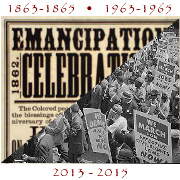What does the Court’s decision on affirmative action mean?
Posted June 24th, 2013 by James DeWolf PerryCategory: Living consequences Tags: Affirmative action, U.S. Supreme Court, University of Texas
The U.S. Supreme Court has finally issued its ruling in this year’s affirmative action case, Fisher v. University of Texas at Austin, voting 7-1 to send the case back to the Court of Appeals for further review.
The Court’s decision upholds, at least for now, the use of race as a factor in admissions, while applying a more skeptical analysis than the lone dissenting justice, Justice Ginsburg, believes is appropriate. (Justice Kagan recused herself and took no part in the case.)
The majority opinion, authored by Justice Kennedy and supported by the other six justices, holds that the Fifth Circuit failed to properly ask whether the university’s use of race in its admissions policy meets the standard of “strict scrutiny,” the especially demanding standard which applies to the use of race in governmental actions.
This result means that the Fifth Circuit will have to take a closer look at the university’s admissions policy, asking whether, in light of the circumstances and the specific use of race as one of many factors in admissions, the policy is justified by the compelling, but complex, government interest in the educational benefits of a diverse student body, which includes race among many other factors. (This is the test established by Justice Powell in Bakke under the Fourteenth Amendment.)
The Supreme Court has found that the appeals court was right to grant deference to the university’s judgment that the diversity it is seeking “is essential to its educational mission.” However, the Fifth Circuit also granted deference to the university’s judgment that its admissions policy is is tailored sufficiently narrowly to achieve this goal while treating each applicant as an individual and not making race the “defining feature of his or her application.” The Court’s majority opinion holds that, under Grutter, the courts must closely inquire into how the university’s admissions policy works in practice, whether it meets the test above, and whether there were any “race-neutral alternatives” which would also have provided the educational benefits that come from diversity.
Justice Ginsburg’s dissent casts additional light on the differences among the justices. She argues that Bakke and Grutter do not call for the additional analysis the majority is requiring. Instead, Ginsburg points to several features of the university’s admissions policy, including the use of race as only one factor among several, and periodic reviews of the policy’s effects, and the circumstances of race in Texas and the nation which the university is trying to address.
Ginsburg argues that what is at issue in affirmative action policies are “the lingering effects” of “an overtly discriminatory past,” including “centuries of law-sanctioned inequality.” She therefore insists in her dissent that policies which “candidly disclose their consideration of race” are “preferable to those that conceal it.”
Most tellingly, Ginsburg asserts that, as compared with the university’s open use of race as an admissions factor, options that don’t take race into account, such as a “holistic review” of each applicant without considering race, aren’t really race-blind at all:
I have said before and reiterate here that only an ostrich could regard the supposedly neutral alternatives as race unconscious.
Meanwhile, Justice Scalia’s concurring opinion states clearly that he is voting with the majority because the petitioner did not ask the Court to overrule its earlier decisions holding that affirmative action is constitutional at all. Justice Thomas, meanwhile, devotes his concurring opinion to explaining why he would, in fact, have overruled the use of affirmative action in higher education in this particular case.



Leave a Reply